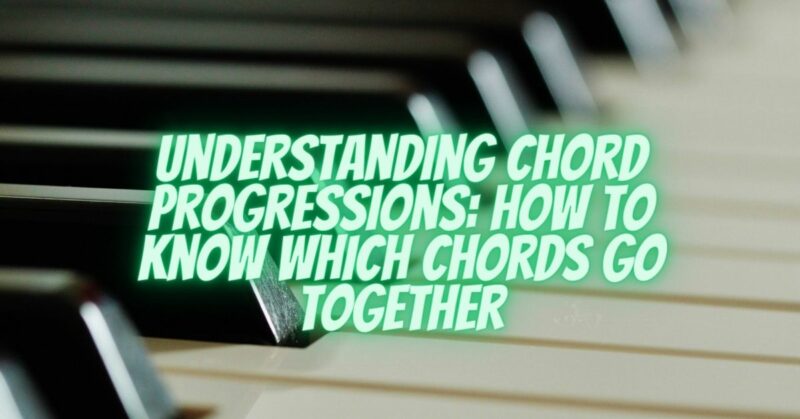Music is a harmonious blend of sounds, and at its core, lies the arrangement of chords. Chords are the building blocks of harmony, and understanding how different chords work together is essential for creating compelling and expressive musical compositions. Whether you’re a seasoned musician or just starting on your musical journey, grasping the concept of chord progressions will open up a world of creative possibilities.
The Basics of Chords
Before delving into how chords interact, let’s review the basics. A chord is a combination of three or more notes played simultaneously, creating a harmonious sound. Each chord has a root note, which serves as its foundation. Built on this root note are other notes, known as intervals, that determine the chord’s quality and character.
Chords are often named according to their root note and their quality (major, minor, diminished, augmented, etc.). For instance, a C major chord is based on the C note and follows a specific pattern of intervals that defines its major quality.
Building Chord Progressions
Chord progressions are sequences of chords played in a specific order. They form the backbone of a musical piece and contribute significantly to its emotional impact. But how do you know which chords go together harmoniously?
- Diatonic Harmony: The most fundamental principle is diatonic harmony, which revolves around the natural scale of the chosen key. A key is a set of notes that form the basis of a composition. In a major key, there are seven diatonic chords, each built on a note of the scale. These chords are categorized as major, minor, or diminished, depending on the pattern of intervals from the root note.
- Chord Functions: Diatonic chords in a key have specific roles or functions. The three primary functions are tonic, subdominant, and dominant. The tonic chord provides a sense of resolution and stability. The subdominant chord adds a touch of tension, and the dominant chord creates an expectation for resolution. Progressions that follow these functions often sound pleasing.
- Common Progressions: Certain chord progressions have become classic due to their appealing sound. For example, the I-IV-V progression (using the first, fourth, and fifth chords of a key) is a staple in many genres. It offers a balance of tension and resolution.
- Modal Interchange: This advanced technique involves borrowing chords from related scales or modes. It can add color and depth to your progressions. For example, in a major key, you might borrow a chord from the parallel minor key.
- Sequencing: Another way to create harmonious progressions is by using sequences. Take a simple chord progression and repeat it starting on a different chord’s root. This can add a sense of motion and familiarity.
- Experimentation: Music is a form of artistic expression, so don’t be afraid to experiment. Trying unconventional chord progressions can lead to unique and captivating results.
Developing Your Ear
While theory provides a framework, developing a keen musical ear is equally important. Listening to a wide variety of music can help you internalize common progressions and chord relationships. Analyzing songs you love can reveal patterns that you can apply to your compositions.
In Conclusion
Understanding which chords go together is a blend of music theory, creativity, and intuition. Starting with diatonic harmony and chord functions sets a strong foundation, but don’t shy away from exploring beyond the basics. The more you experiment and analyze, the more confident you’ll become in creating captivating chord progressions. So, pick up your instrument of choice, play around with different chord sequences, and let your musical instincts guide you to harmonious compositions.


